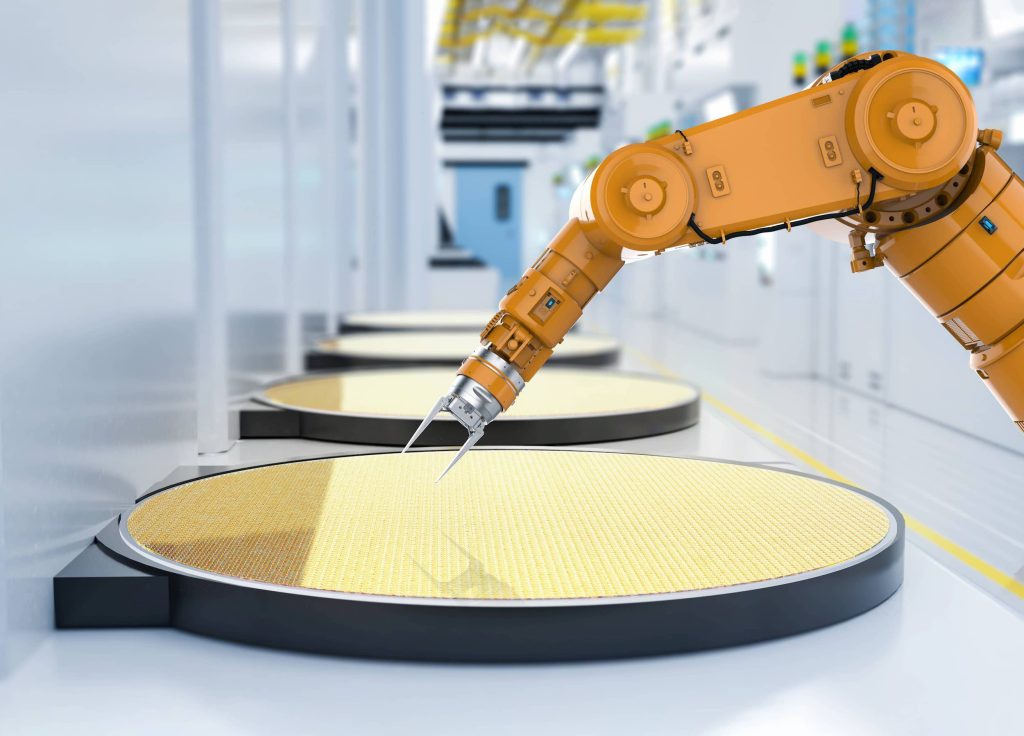Chemical & Petrochemical Plants Building Construction
Commercial buildings can pose a variety of issues for insulation contractors.
Commercial jobs include office buildings, hotels, schools, hospitals, retirement centers, condominiums, government buildings, and supermarkets, among others. Of these, hospitals and schools seem to offer the greatest opportunities in today’s construction market.

Examples of mechanical applications requiring insulation on these projects include: low-pressure steam/condensate, hot water, cold water, and air-conditioning lines; heating hot water, supply and return chilled water, and refrigerant lines; and supply and return outside air and exhaust air systems.
Commercial building projects typically differ from industrial projects in the following characteristics:
- Insulation thicknesses must conform to local building codes;
- Narrower temperature range (+40°F to +300°F);
- Smaller scope and pipe size;
- Generally shorter time frame from bid to installation, and from installation start to completion;
- Generally new construction or additions—not maintenance work;
- Minimal maintenance can be expected after the installation is completed.
The 3 biggest issues the insulation contractor faces on commercial jobs are:
- Making sure the building is enclosed (i.e., the roof is installed and the building is water tight) before insulation installation starts. This may not always be feasible since the insulation contractor does not control this;
- Ensuring the design engineer and other trades (pipe/duct mechanical contractors) provide clearance between pipes and walls for the insulation thickness specified;
- Working with the schedules of the other mechanical and plumbing contractors.
When specifying the best insulation for these applications, the design engineer/contractor first looks at performance compliance, which would include meeting all state and local building code requirements. The insulation materials must be able to withstand the temperatures and environmental conditions of the particular application. Different regions of the country—e.g., north versus south, or inland versus coastal areas—may require different materials for the same application because of the different environmental conditions, such as higher humidity in southern and coastal areas. This is particularly true for below-ambient systems, such as chilled water, where both surface condensation (sometimes called casual or intermittent condensation) and condensation within the insulation area (which can be caused by an inadequate moisture vapor seal on all joints, longitudinal seams, fittings, hangers, and termination points) constitute a key concern. These must be addressed in the design parameters. When the building envelope is not dried-in, it is important that the engineer specifies insulation materials with low water-absorption characteristics and insulation systems with a low water-vapor permeability.
When specifying the best insulation for these applications, the design engineer/contractor first looks at performance compliance, which would include meeting all state and local building code requirements. The insulation materials must be able to withstand the temperatures and environmental conditions of the particular application. Different regions of the country—e.g., north versus south, or inland versus coastal areas—may require different materials for the same application because of the different environmental conditions, such as higher humidity in southern and coastal areas. This is particularly true for below-ambient systems, such as chilled water, where both surface condensation (sometimes called casual or intermittent condensation) and condensation within the insulation area (which can be caused by an inadequate moisture vapor seal on all joints, longitudinal seams, fittings, hangers, and termination points) constitute a key concern. These must be addressed in the design parameters. When the building envelope is not dried-in, it is important that the engineer specifies insulation materials with low water-absorption characteristics and insulation systems with a low water-vapor permeability.

After reviewing the insulation
materials, one may find that there are 2 or 3 that meet the performance
criteria needed. Thus, the next step in the selection process is to select the
most cost-effective material, which is often decided by which product is most
easily installed or will last the longest with little or no maintenance.
This article will address the
unique circumstances of commercial buildings that will determine performance
and cost effectiveness.
Note that the building owner needs to differentiate between lowest first-cost materials and lowest life-cycle cost materials, since these are often not the same. Then, they must convey their requirements to the specifying engineer.
On hot systems, the following materials are often specified and installed: :
- Low-pressure steam and condensate—fiberglass with all-service jacketing (ASJ)
- Hot water—fiberglass with ASJ (hot water is sometimes subcontracted out by the plumbing contractor to an insulation subcontractor). In addition, closed-cell insulations are sometimes used when the mechanical engineer does not want to mix materials on domestic hot- and cold-water applications.
For hot applications, fiberglass with ASJ has the benefits of performance, ease of installation, and cost effectiveness. For below-ambient systems—i.e., cold or chilled water—design engineers routinely select closed-cell insulation materials with an inherent low water vapor permeability value, particularly in unconditioned spaces, because of their concern over condensation control and long-term thermal performance. This group of materials would include cellular glass, elastomeric foam, phenolic foam, polyolefin, polystyrene, and polyisocyanurate (PIR) foam insulations. Fiberglass continues to be specified and successfully used on below ambient systems in continuously conditioned spaces such as occupied offices, where humidity is low and there is less vapor drive, typically in the northern regions. For unconditioned spaces, it is recommended that fiberglass with ASJ be covered with a continuously sealed polyvinyl chloride (PVC) jacket.

Another consideration to take into account is environmental fluctuations during use in a particular space. For instance, a conditioned convention center hall may experience major variations in ambient conditions during loading or unloading, when the shipping doors are wide open. The proper insulation for this type of condition must be selected or the building’s systems may face problems. A similar situation can occur when the convention center is not in use and the HVAC system is turned off, causing a significant rise in indoor conditions.
Performance issues unique to below-ambient systems in commercial buildings that would factor into the material selection process may include:
- Susceptibility of mold growth on enclosed piping (behind walls). This is particularly a problem with paper-faced vapor retarders in unconditioned spaces. The concern over mold issues in this type of application may lead to more expensive and more labor-intensive insulation systems being used to reduce potential future problems.
- Susceptibility of vapor barrier damage in pipe chases where material must be applied and slid through penetrations. This would limit maintenance after installation. Some insulation materials require the specification of a robust jacket capable of withstanding abuse; PVC jacket is sometimes used for this reason. Multi-layer (low perm) jackets with easy-to-seal seams that resist abuse may be used where maintenance of the system will be limited or non-existent.
- Temperature and humidity not regulated uniformly throughout the building may require the use of greater insulation thickness to prevent condensation in some parts of the building (e.g., back room or ceiling areas).
- Prevention of water vapor condensation/intrusion within the insulation and on the metal pipe and equipment surfaces, requiring that all insulation systems be completely sealed against water vapor intrusion. In this case, only insulation systems capable of being continuously sealed should be selected. An often misleading concept is that all jacketing provides a moisture/moisture vapor barrier. Metal jacketing, such as aluminum, only provides a moisture vapor barrier if all seams and any penetrations (e.g., rivet holes) are caulked; therefore, metal jacketing is intended to be protective and not as a vapor retarder material. Additionally, PVC jacketing will only be effective as the water vapor transmission barrier of the seams. Flexible laminate jacketing, some with a zero permeance rating, must be continuously sealed, usually with a compatible, zero permeance, pressure sensitive tape. Rewettable fiberglass cloth provides abuse protection only and is not a vapor retarder barrier. For below-ambient systems, the insulation beneath the jacketing should provide a moisture vapor barrier on its own.
Installation issues unique to below-ambient systems in commercial buildings may include:
- Insulation being installed prior to the building being enclosed. This is a quite common, but counterproductive, practice. Closed-cell foam materials are capable of withstanding intermittent moisture or high-humidity conditions that may be present during the construction of the building, but this is often not factored into the engineering design specification. Closed-cell foam insulation products are sometimes specified or used for this reason, such as in hotels (duct risers);
- The need for a flexible insulation material for installation around and through walls, including air-conditioning lines, chilled water run-outs, etc. Note: Air-conditioning lines are typically completed by the mechanical/equipment installer.
- The need to meet a compressed installation time schedule. Installation products with adhesive, pre-applied, pre-fabricated fittings, or insulation with pre-applied jacketing, are often used to shorten the installation time. These products may also reduce the risk of failures at the seams and joints of the insulation or the jacketing. Seams, joints, jacketing, or adhesives applied in factory-controlled conditions may perform better than those applied in the field under varying environmental conditions.
- Ability of the insulation to be slid on the copper pipe in long sections (20 inches) to eliminate butt joints and speed installation time, often a concern in supermarkets. Note: Supermarkets are generally done by the refrigeration contractor.
- Burial applications that require a load-bearing capacity as well as being water tight.
- Extreme high-humidity applications may require low water-vapor transmission insulation and an additional ?low permeance, continuously sealed? jacket to prevent long-term water-vapor penetration.
- Prevention of pipe and equipment corrosion, sometimes called corrosion under insulation or CUI, in cold storage applications (using ammonia systems) should receive extra care. Polystyrene and PIR jacketed sealed with a low permeance vapor retarder have a long history of use.
